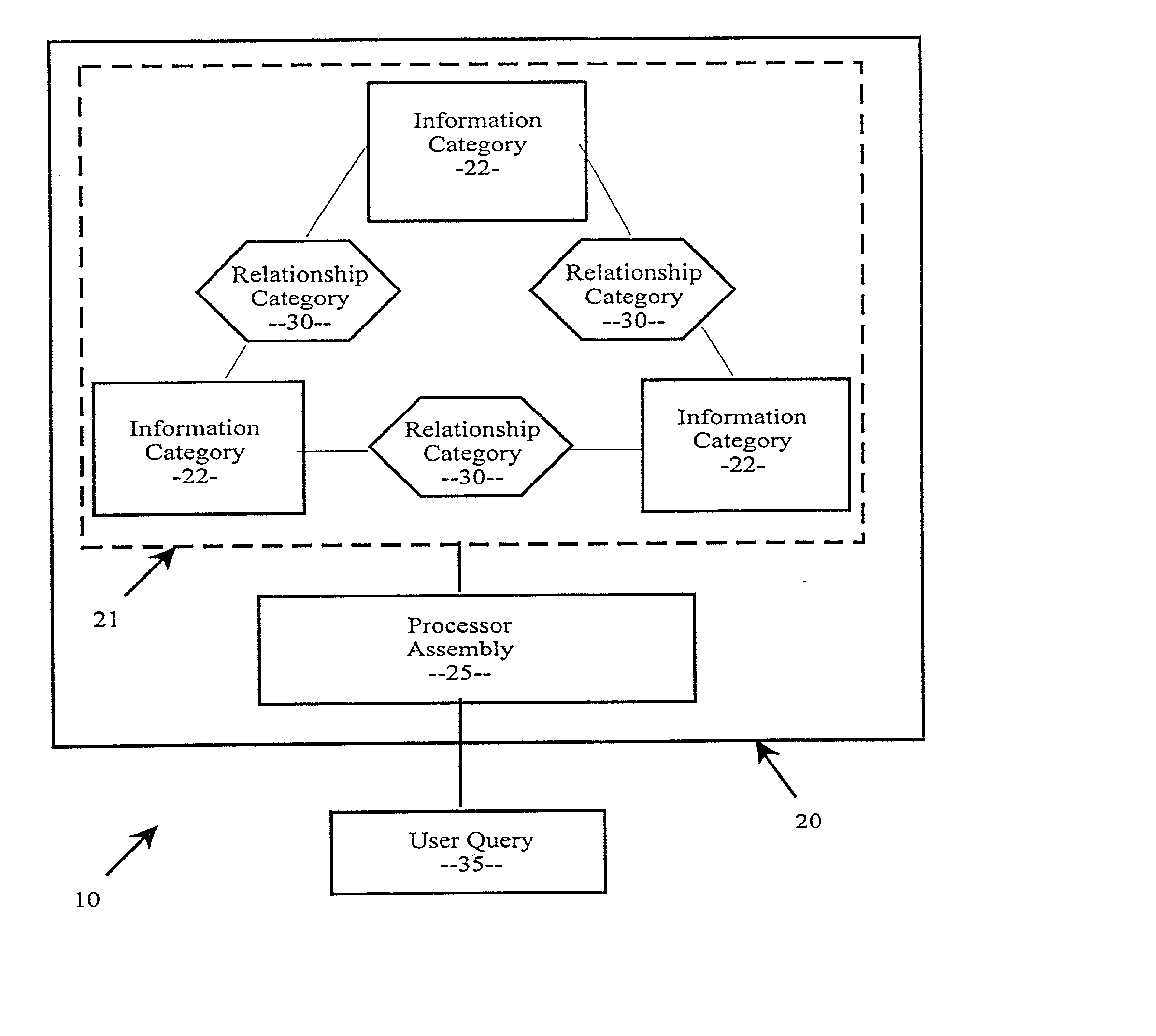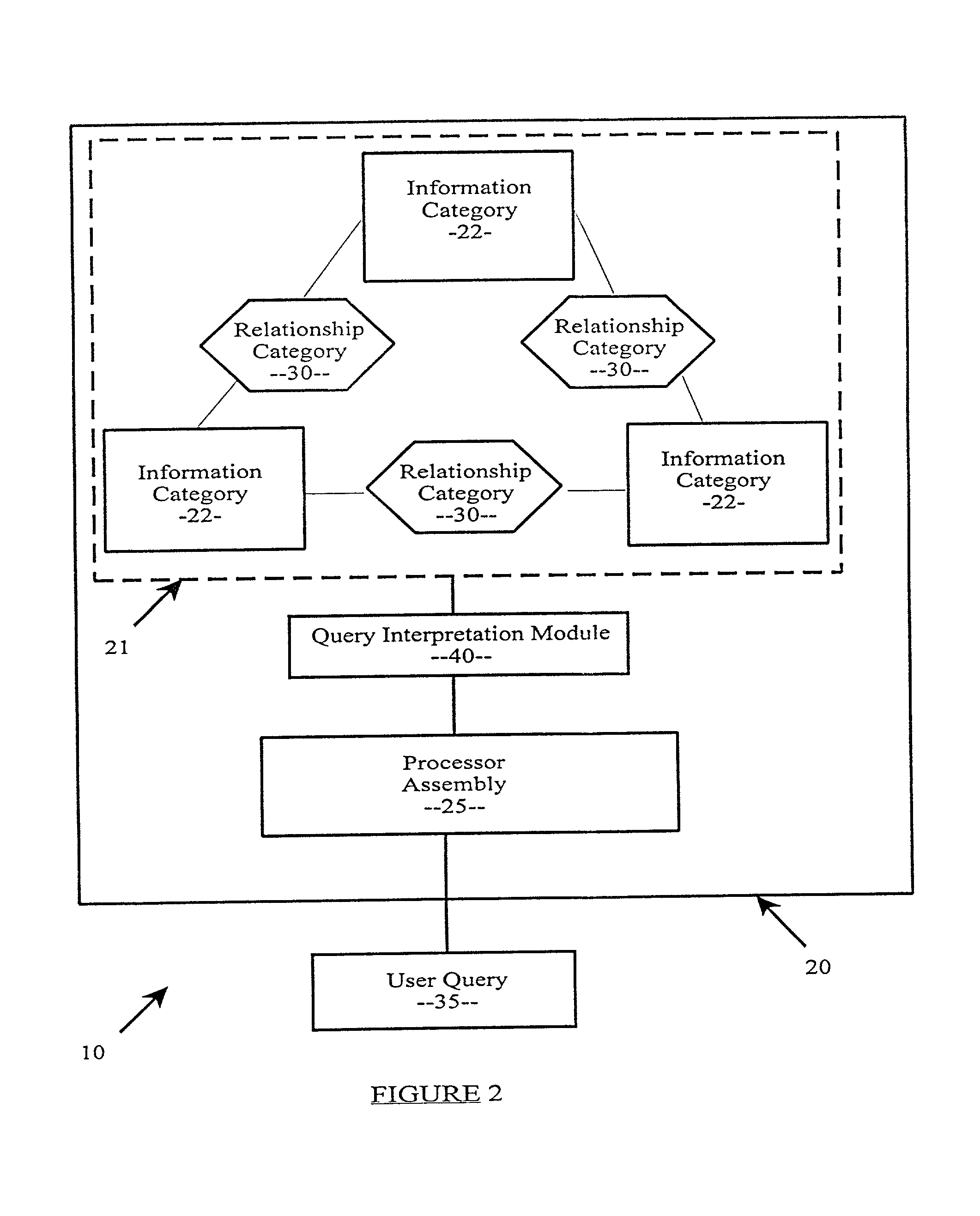Database querying system and method
a database and database technology, applied in the field of database querying system and method, can solve the problems of substantial amount of prior training, large and large nature and amount of information contained in the databas
- Summary
- Abstract
- Description
- Claims
- Application Information
AI Technical Summary
Problems solved by technology
Method used
Image
Examples
Embodiment Construction
Consider the Semantic Schema of FIG. 3.1
[0038] Original Relations
[0039] For every category C in the schema, the schema defines certain relations whose domain is the category C. Let r be a relation with domain C and range B, i.e. r:C.fwdarw.B. B can be another abstract category in the schema or it can be a concrete category, e.g. Number or String. The name of the relation r as defined in the semantic schema is called the short semantic name. It is unique among all the relations whose domain is C. The relation's full semantic name is made of the name of its domain and the short name: C_r. The short name is used only when the domain is known. (Example: short name: works_in; full name: instructor_works_in) The relation r is called to-many if it is possible that at some point in time there is an object x and two distinct objects y and z so that there are relationships xry and xrz. If this situation may never exist then the relation is called to-one.
[0040] Inferred Relations
[0041] Every a...
PUM
 Login to View More
Login to View More Abstract
Description
Claims
Application Information
 Login to View More
Login to View More - R&D
- Intellectual Property
- Life Sciences
- Materials
- Tech Scout
- Unparalleled Data Quality
- Higher Quality Content
- 60% Fewer Hallucinations
Browse by: Latest US Patents, China's latest patents, Technical Efficacy Thesaurus, Application Domain, Technology Topic, Popular Technical Reports.
© 2025 PatSnap. All rights reserved.Legal|Privacy policy|Modern Slavery Act Transparency Statement|Sitemap|About US| Contact US: help@patsnap.com



